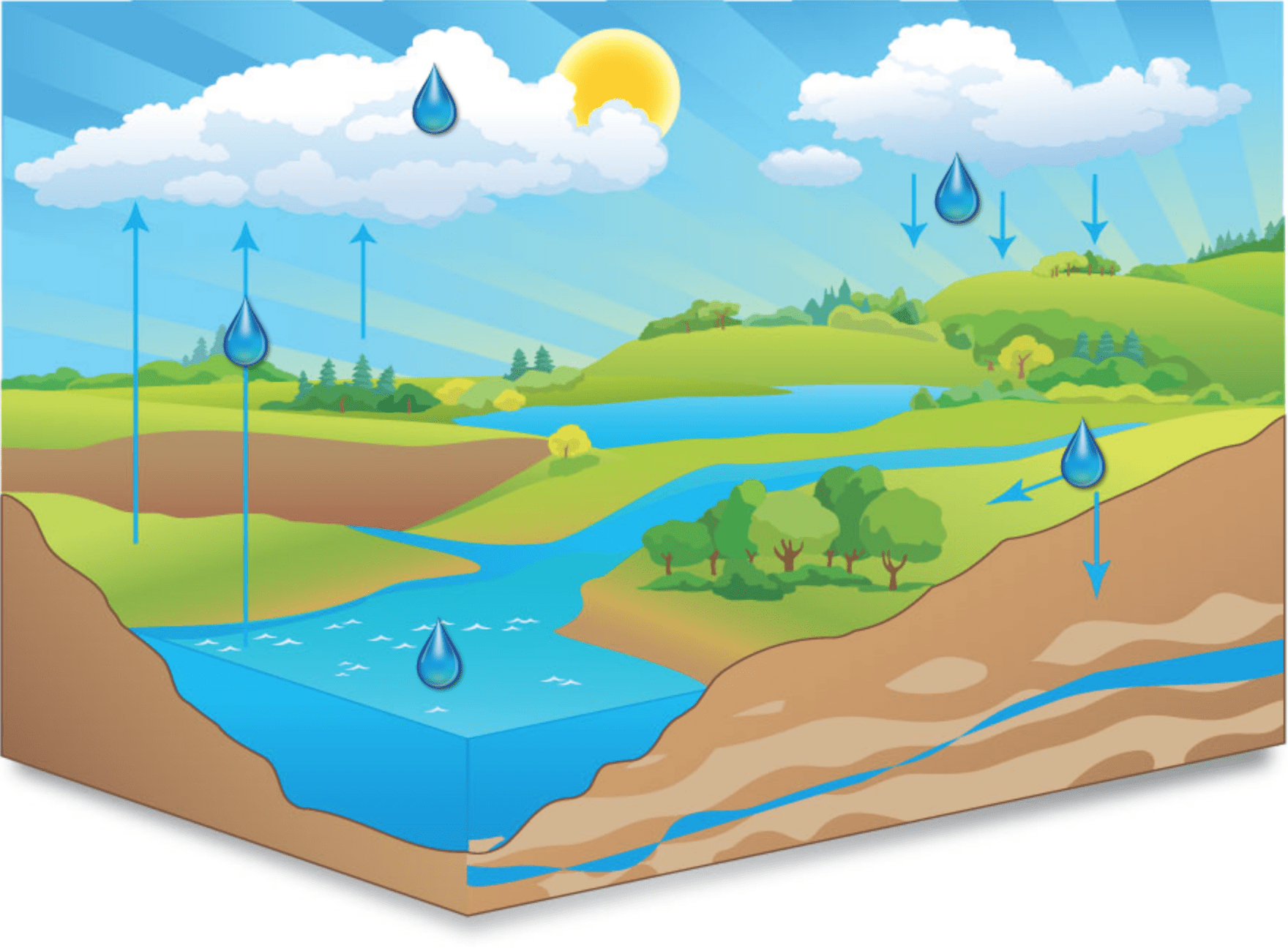Water Cycle
Water Cycle
The Water Cycle, also known as the Hydrologic Cycle, describes the journey, or processes, that water endures as it moves throughout our planet. Water changes states from liquid to vapor or ice, and back again. In fact, water is always on the move, and if you look hard enough, you might just spot it at one of its many stops throughout its journey.
Evaporation
Evaporation occurs when surface water is converted to water vapor through sun exposure and hot temperatures, as well as from plant water loss through a process called transpiration. Snow and ice can also evaporate water through a process called sublimation, but we probably won’t see too much of that here in the sunny Santa Clarita Valley.
Condensation
Condensation is the part of the water cycle where water vapor’s transform into liquid droplets in the air creating clouds, fog, and humidity.
Precipitation
Water condenses and collects in the atmosphere where it is cooled until it is too heavy to remain in the air and eventually falls back to the Earth’s surface. Precipitation occurs as rain, snow, hail, fog drip, and sleet.
Collection
Collection is the stage of the water cycle where water is temporarily collected and stored. As water returns to the Earth’s surface, it will run-off into our rivers, streams, lakes, and glaciers. However, most precipitation will collect in one of the Earth’s oceans, where 97% of all water sources are currently deposited. During the collection phase, water will also infiltrate into the ground and fill our alluvial and deep formation aquifers.


